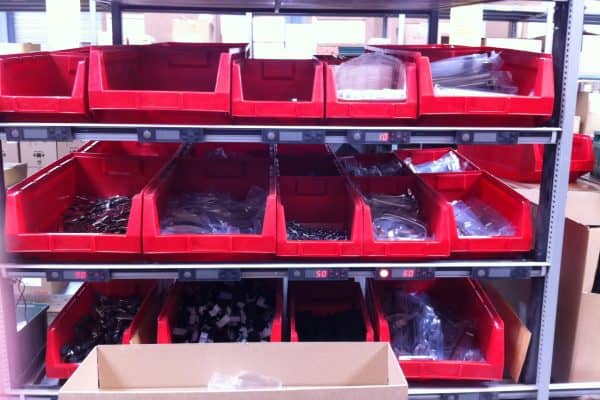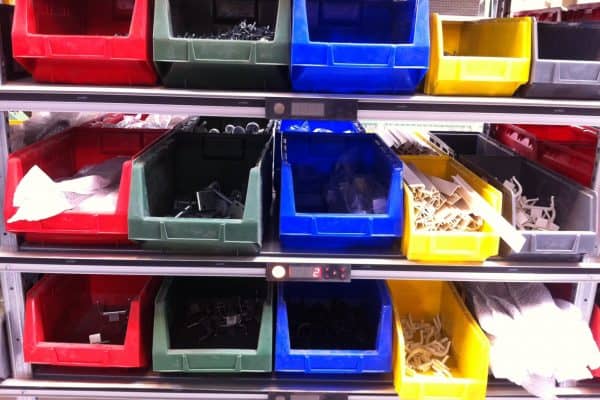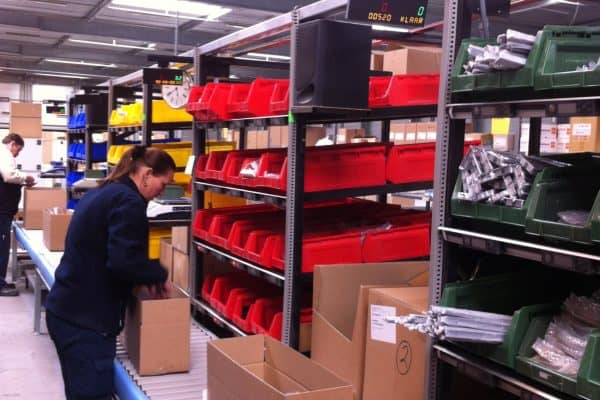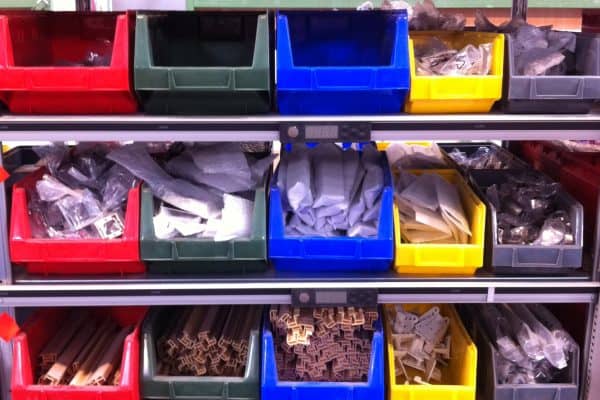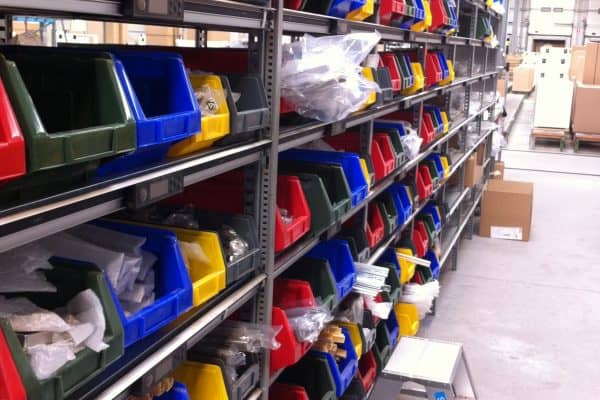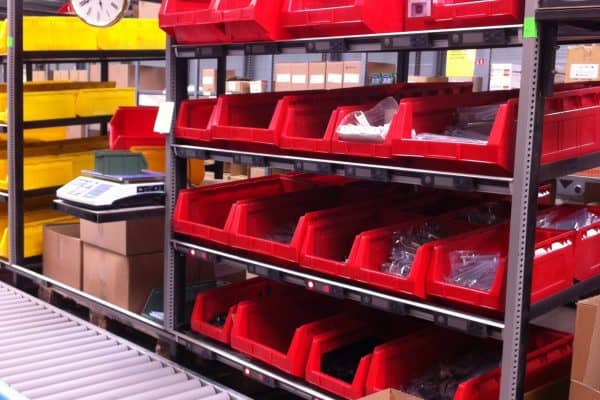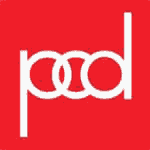Keller kitchen factory was designated for years to paper order picking lists for the order picking of thousands of small items a week. In 2011, the errorprone and inefficient method was replaced by a Pcdata Pick to Light and Pick to Colour system. The new system drastically improved Keller’s daily operation. Delivery reliability and productivity have increased sharply. Moreover Keller succeeded to minimize the inventory differences and staff can be deployed more flexible.
For more than 75 years Keller kitchen focuses on the production of quality kitchens for both the business market as the consumer market, both for Dutch internal market and in foreign countries. Every year about 50.000 kitchens are produced in Roosendaal. These kitchens find their way in the comprehensive and international (dealer) network of the company.
For the assembly and finishing of those kitchens, a large number of (small) parts are needed, such as screws, plugs, caps and handles. Until recently these so-called haberdashery were collected using a paper picking list. ”This was a labour-intensive process, which in our view could be more quickly and efficiently” says Gerard Maanders, head of logistics at Keller kitchen.
Best solution
The kitchen manufacturer not only wanted a faster and more efficient picking process; the delivery reliability also had to increase. Next to this the stock differences had to be reduced further and a new system needed to increase flexible deployment of staff. Together with a project team, Maanders researched several options, including the use of scanners. Most of the parts however, are too small to scan efficiently. Next to that, approximately 133.000 items a week are picked. “It would be too devious to scan them all” said Maanders. A Pick to Light system turned out to fulfill the wishes and requirements of Keller the most. In addition, sister company Bruynzeel kitchens, which Keller works together with intensively since 2010, had good experiences with such a Pick to Light system. However with respect to Bruynzeel the commitment turned out to be too small to get the case profitable.
Not profitable
Still, as the head of logistics was convinced of the advantages of Pick to Light, he asked the remaining providers to think of a practical solution that was profitable. At Pcdata, Maanders found exactly what he was looking for: “Their solution was most stable and recognizable for our employees. Also they intensively and best supported us to get the case profitable”. In consultation with Pcdata, Keller decided to use a Pick to Light system for their fast mover items and to do the picking of the B- and C- articles with Pick to Colour. Components that are being picked five times a day or more often, are stored in the Pick to Light area. These fast movers range about 80 SKU’s. The other articles are on the other side of the aisle, in coloured boxes, collected according to the Pick to Colour principle. In that area one light per five storage locations is sufficient. If an article has to be picked from a certain bin, the light in the colour of the corresponding bin lights. By collecting the B- and C- articles according to the Pick to Colour principle, less lights are needed and the control investment is much lower.





